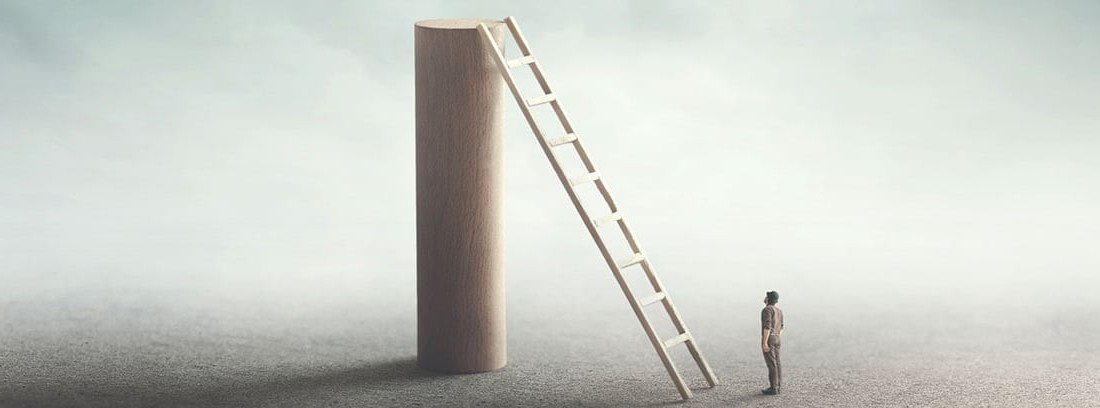What is acrophobia?

Acrophobia is a intense and irrational fear what some people feel to the heights. It is one of the most common fears; between 5% and 10% of the population suffer from it and it is usually more common in women.
It can occur in dangerous situations, but also in safe situations or even in the person's own imagination; just thinking about it. Although it usually occurs when the person look down, there is a variation in which the discomfort occurs when the person look up, but it is rare.
Causes of fear of heights
Recent studies associate acrophobia with inner ear and sense of balance. Our sense of balance integrates proprioceptive and vestibular sensations with visual cues. Fear is not only activated when we are at a certain height or imagine, also our position at that height it has a lot to do with it. We do not have the same sensations of an abyss while standing, than sitting or stretching.
Also, acrophobia can develop after a negative experience related to heights, although it occurs in few cases. Sometimes they are even the parents who can transmit fear to the child.
However, it is common for most phobias to have a multicausal origin. There are various factors that can create different degrees of vulnerability to anxiety, not all people have the same degree of predisposition.
How to overcome the fear of heights?
Acrophobia is a perfectly surmountable phobia. It will be a more or less rapid process depending on the psychological resources of the person, the chronicity of the problem or whether or not there are other simultaneous disorders. The most used techniques in the treatment are:
- Systematic desensitization: consists of making a graduation of situations from less to more frightening for the person and confront them progressively. It involves tackling difficult situations, starting with visualizations, and then moving on to real, live situations. You only go to the next stage when you have passed the current step in a state of tranquility. The virtual reality is offering many possibilities in this area.
- Paradoxical techniques: It consists of imagining the worst of situations in a safe environment and then expanding it to real situations. It is important to carry it out low.
- Cognitive techniques: restructure the beliefs related to fear to modify the emotional response.
- Implosive therapy: implies exposing the person in the feared situation preventing him from escaping. If the person is not previously prepared, it can even be traumatic, so it is one of the less recommended techniques.
- Hypnosis
- Relaxation techniques
On the contrary, there are "remedies" that, instead of eliminating the fear of heights, make it increase. For example, avoiding dreaded situations, trying to be calm paradoxically makes us more nervous and asking other people for help since it gives the feeling of incapacity and increases their own insecurity.
Symptoms of acrophobia
- muscle tension
- Chest pain or shortness of breath
- Dizziness and nausea
- Tachycardia, palpitations.
- Dry mouth
- Internal turmoil
- Reduction of blood pressure.
- Fear of falling or jumping oneself.
- Feeling of loss of control
- Flight impulse.
- Concern.
- Social fear (shame that others perceive the problem or fear of being judged negatively).
- The feeling of lack of control of the situation and the frustration that it brings can end up affecting theto self-esteem of the person, especially if he must expose himself often to the feared situations.
- In children It can manifest itself with tantrums, uncontrolled crying, or becoming paralyzed.
What you should know:
- It is one of the most common fears, almost 5% of the population can suffer from it.
- It is important to know how fear is reinforced so that you can turn it around and stop doing everything that increases the problem.
- Acrophobia is a phobia that has a solution.
Specialist in Clinical Psychology Advance Medical Consulting Psychologist
(Updated at Apr 14 / 2024)